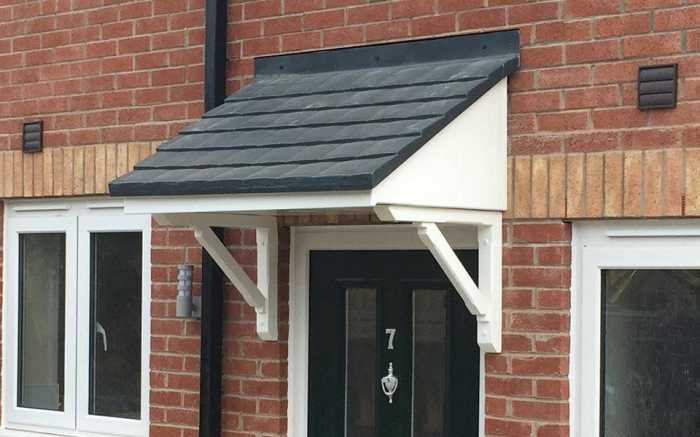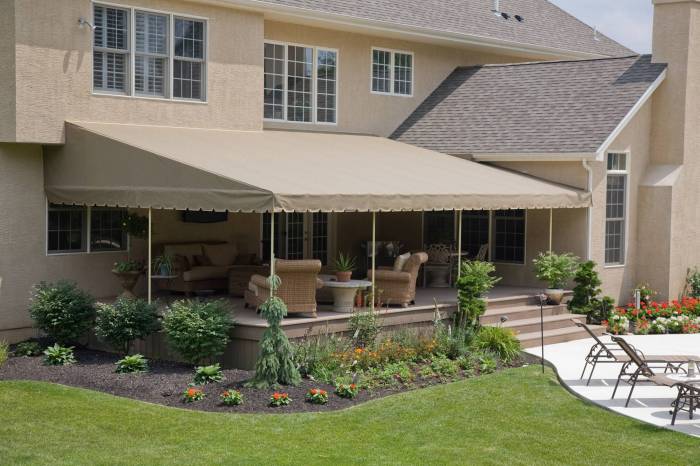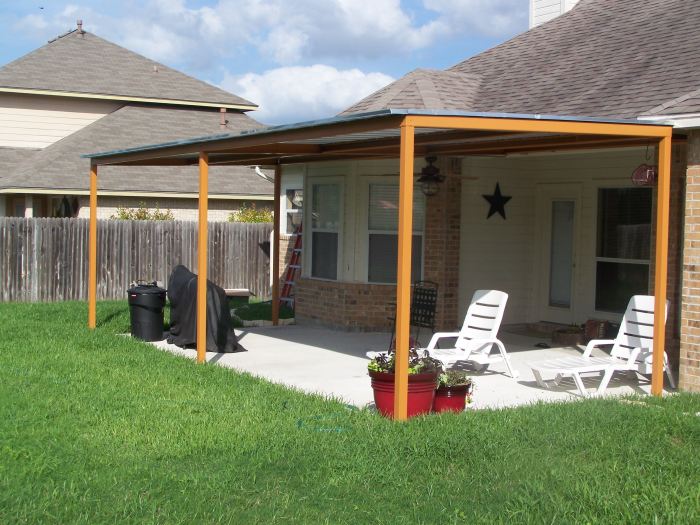Welcome to the realm of porch canopy ideas, where imagination meets functionality. Dive into a world of stylish and practical designs that will elevate your outdoor space into an enchanting sanctuary. From classic to contemporary, we’ll explore the endless possibilities that await your porch, empowering you to create a haven that reflects your unique style and provides respite from the elements.
As we delve into the intricacies of porch canopies, you’ll discover a symphony of materials, styles, and structural considerations that will guide you towards the perfect choice for your home. Whether you seek a timeless wooden canopy, a sleek metal masterpiece, or a vibrant fabric haven, we’ll unveil the secrets to selecting the ideal material that complements your architectural style and withstands the test of time.
Design Considerations
When selecting a porch canopy design, several factors must be considered to ensure harmony with the home’s exterior aesthetics. These include the architectural style of the house, the local climate, and personal preferences. The canopy’s design should complement the architectural features of the home, enhancing its overall appeal.
Architectural Style
The architectural style of the home significantly influences the choice of canopy design. For instance, a Victorian-style home would pair well with an ornate canopy featuring intricate detailing, while a modern home might opt for a sleek and minimalist canopy.
Climate
The climate of the area also plays a role in canopy selection. In regions with heavy rainfall, a canopy with a sloped roof is essential for proper drainage. In areas with strong winds, a sturdy canopy with reinforced supports is recommended.
Personal Preferences
Ultimately, personal preferences should guide the final canopy design. Homeowners can choose from a wide range of materials, colors, and styles to create a canopy that reflects their taste and complements the exterior of their home.
Materials and Durability

Porch canopies can be made from a variety of materials, each with its own advantages and disadvantages. The choice of material will depend on factors such as the desired style, budget, and climate.
- Wood:Wood is a classic choice for porch canopies, offering a warm and inviting look. However, wood requires regular maintenance to protect it from rot and decay.
- Metal:Metal canopies are durable and weather-resistant, making them a good choice for areas with harsh climates.
However, metal can be more expensive than other materials and can be noisy in windy conditions.
- Fabric:Fabric canopies are a lightweight and affordable option. However, they are not as durable as wood or metal and can fade over time.
- Polycarbonate:Polycarbonate is a lightweight and durable material that is resistant to UV rays and weather damage.
It is also relatively inexpensive, making it a good choice for budget-conscious homeowners.
Canopy Styles

Porch canopies come in various styles, each with its own unique aesthetic appeal and functional benefits. The choice of style depends on the architectural style of the house, the desired level of shade and protection, and personal preferences.
Canopy styles can be broadly categorized into flat, sloped, curved, and arched.
Flat Canopy
Flat canopies are the simplest and most common type of canopy. They consist of a flat panel of material supported by beams or posts. Flat canopies provide basic protection from the sun and rain, but they do not offer as much shade or visual interest as other styles.
Sloped Canopy
Sloped canopies are similar to flat canopies, but they have a slight slope to one or more sides. This slope allows water to drain off more easily, making them a good choice for areas with heavy rainfall. Sloped canopies also provide more shade than flat canopies.
Curved Canopy
Curved canopies have a gentle curve that adds a touch of elegance to any porch. They are more visually appealing than flat or sloped canopies, and they can provide excellent shade coverage. However, curved canopies are more difficult to install than other styles.
Arched Canopy
Arched canopies have a graceful arch that creates a dramatic focal point. They are the most visually striking type of canopy, and they can add a touch of grandeur to any porch. However, arched canopies are also the most expensive and difficult to install.
Structural Considerations
Ensuring proper structural support is crucial for the safety and longevity of porch canopies. Neglecting this aspect can lead to catastrophic failures, compromising the integrity of the porch and posing a safety hazard.
The size and weight capacity of the canopy must be carefully determined based on the dimensions of the porch and local building codes. Exceeding these limits can result in structural instability, potentially causing damage or injury.
Weight Capacity
The weight capacity of the canopy should account for the weight of the canopy itself, any decorations or fixtures, and potential snow or ice accumulation during winter months. Local building codes typically specify minimum weight capacities for canopies based on their size and location.
Wind Resistance
Canopies must be designed to withstand wind loads. The shape and size of the canopy, as well as the materials used, influence its wind resistance. Adequate bracing and anchoring are essential to prevent wind damage.
Snow and Ice Loads
In areas prone to snow and ice, the canopy must be designed to support the additional weight. This requires stronger support structures and materials that can handle the increased load without collapsing.
Installation Options

Installing a porch canopy is a great way to add shade and protection from the elements to your outdoor space. There are a variety of different installation methods available, depending on the type of canopy you choose and your skill level.
If you’re not comfortable installing the canopy yourself, you can hire a professional to do it for you. However, if you’re handy and have some basic tools, you can save money by installing it yourself.
DIY Installation
If you’re installing the canopy yourself, there are a few things you’ll need to do first:
- Choose the right location for the canopy. Make sure it’s level and has enough space around it so that you can open and close it easily.
- Gather the necessary tools and materials. You’ll need a drill, a screwdriver, a level, a tape measure, and the canopy itself.
- Follow the manufacturer’s instructions for installing the canopy. Most canopies come with detailed instructions that will guide you through the process.
Professional Installation
If you’re hiring a professional to install the canopy, they will typically do the following:
- Visit your home to assess the site and determine the best location for the canopy.
- Order the canopy and all necessary materials.
- Install the canopy according to the manufacturer’s instructions.
- Clean up the work area and remove all debris.
Lighting and Accessories

Enhance the functionality and aesthetics of your porch canopy with thoughtful lighting and accessories.
Lighting plays a crucial role in illuminating your porch, creating a welcoming ambiance, and enhancing safety. Consider installing recessed lights, pendant lights, or wall-mounted fixtures to provide ample illumination. You can also add dimmers to adjust the brightness level and create a cozy atmosphere.
Accessories
Accessorize your porch canopy with practical and stylish elements. Curtains or screens can provide privacy, protection from the elements, and add a touch of elegance. Planters with lush greenery or vibrant flowers can bring a touch of nature to your outdoor space.
Consider adding a ceiling fan to keep you cool and comfortable during warm weather.
Maintenance and Care
Regular maintenance is crucial for the longevity and optimal performance of porch canopies. Different materials require specific care routines to preserve their integrity and aesthetic appeal.
Cleaning
Regular cleaning removes dirt, debris, and organic matter that can accumulate on porch canopies. Use mild detergents or cleaning solutions specifically designed for the material of your canopy. Avoid harsh chemicals or abrasive cleaners that may damage the surface.
Inspection
Periodic inspections help identify potential issues early on, allowing for timely repairs. Check for signs of wear, damage, loose connections, or rust. Pay attention to areas where water may collect or where debris tends to accumulate.
Repairs, Porch canopy ideas
Prompt repairs are essential to prevent minor issues from escalating into major problems. If you notice any damage or deterioration, address it promptly. Tighten loose screws or bolts, seal leaks, and replace damaged components as necessary.
Cost Considerations

The cost of a porch canopy varies depending on several factors, including materials, size, style, and installation method. Understanding these factors will help you estimate the cost of your project and make informed decisions.
The type of materials used for the canopy and frame, such as aluminum, vinyl, wood, or fabric, significantly impacts the cost. Larger canopies typically cost more than smaller ones, and more intricate designs or additional features like lighting or screens can also increase the price.
Installation Method
The installation method you choose, whether DIY or professional, affects the overall cost. Professional installation can add to the total price but ensures proper installation and longevity.
Case Studies and Examples
Witness the transformative power of porch canopies through real-world examples that showcase their aesthetic and functional impact.
Before-and-after transformations vividly illustrate how canopy installations can elevate the curb appeal, comfort, and overall ambiance of porches.
Modern Minimalist Canopy
A sleek and contemporary porch canopy, featuring clean lines and geometric shapes, complements a modern home’s architecture. The canopy extends the roofline, creating a seamless transition from indoors to outdoors while providing ample shelter from the elements.
Creative Design Ideas

When designing your porch canopy, don’t be afraid to think outside the box and explore unique and creative ideas. Consider using unconventional materials, such as reclaimed wood or metal, or experiment with different patterns or color combinations.
Here are a few examples to inspire you:
Canopy Shape
- Instead of a traditional rectangular canopy, opt for a curved or arched shape.
- Create a unique silhouette by combining different shapes, such as a half-circle with a triangle.
Material
- Use reclaimed wood for a rustic and sustainable look.
- Incorporate metal accents for a modern and industrial feel.
- Add a touch of whimsy with a canopy made of fabric or canvas.
Color
- Go bold with a vibrant color, such as cobalt blue or emerald green.
- Create a calming atmosphere with a neutral color, such as white or beige.
- Experiment with patterns, such as stripes or polka dots, to add visual interest.
Design Guide and Template: Porch Canopy Ideas
Designing a porch canopy can be a daunting task, but with the right tools and resources, it can be a breeze. A downloadable guide or template can provide a structured approach to the process, helping you gather inspiration, determine your requirements, and make informed decisions.
[detailed content here]
Last Word
As you embark on your porch canopy journey, remember that every design decision is a brushstroke on the canvas of your outdoor sanctuary. Let your creativity soar, explore unconventional materials, and embrace bold color combinations. The possibilities are boundless, and the final masterpiece will be a reflection of your unique vision and the perfect complement to your home.
Questions and Answers
How do I choose the right material for my porch canopy?
Consider factors such as durability, weather resistance, and maintenance requirements. Wood offers a classic look but requires regular upkeep, while metal is sturdy and low-maintenance. Fabric canopies provide shade and privacy but may fade over time. Polycarbonate is lightweight and impact-resistant.
What are the different canopy styles available?
Flat canopies provide basic coverage, while sloped canopies shed water and snow. Curved canopies add a touch of elegance, and arched canopies create a grand entrance. Consider the architectural style of your home and the desired functionality when choosing a style.
How do I install a porch canopy?
DIY installation is possible for smaller canopies, but professional installation is recommended for larger or more complex designs. Follow the manufacturer’s instructions carefully and ensure proper structural support to prevent damage or injury.


